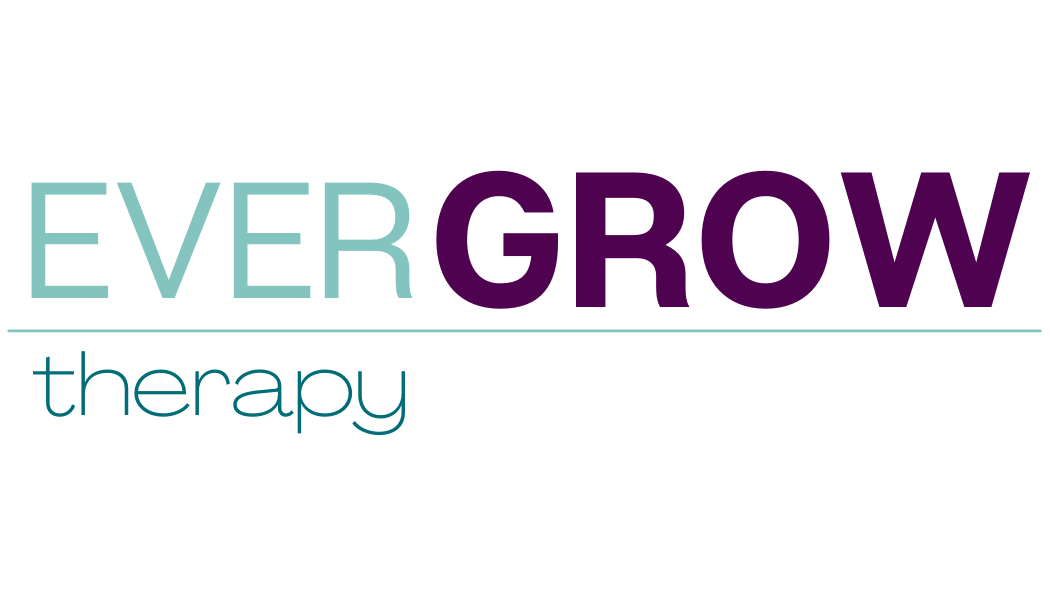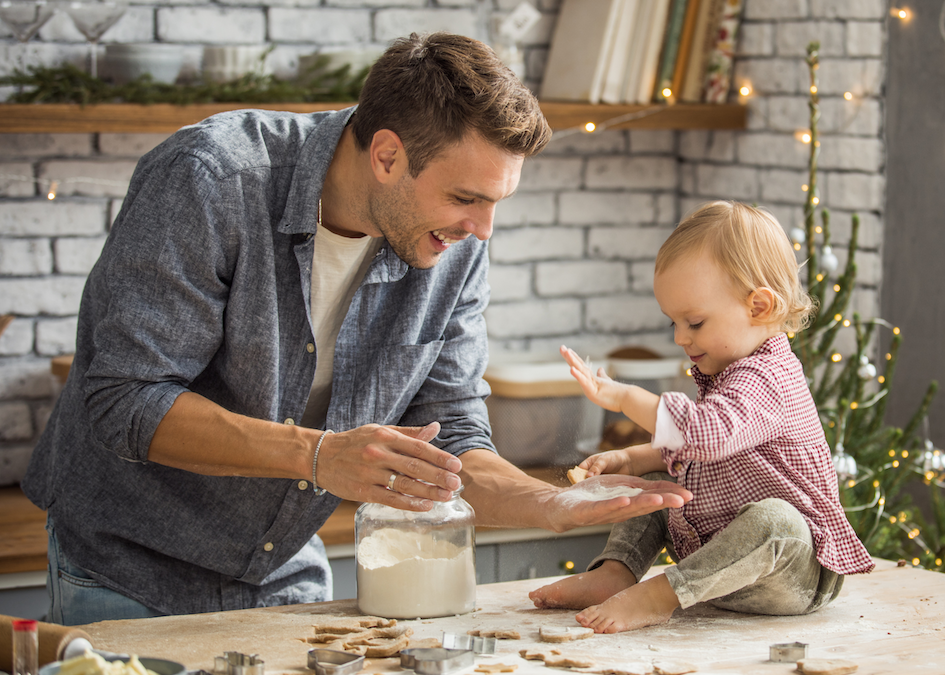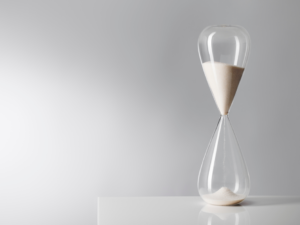Incorporating Mindfulness into Parenthood
You may have heard about the idea of mindfulness by now, as it seems to be a popular catchphrase as of late. But in case you haven’t, mindfulness is a practice that encourages you to keep your thoughts and your attention focused on the present moment. Because when we worry about the future or agonize over what happened in the past, it contributes to the negative emotional burden we carry around with us throughout our day.
Why Mindfulness?
There has been so much research regarding the benefits of both mindfulness and meditation on our physical and mental health that it is in all of our best interests to try and incorporate these things into our lives. But when parenthood is part of the picture, we all know that everything becomes more challenging. Luckily mindfulness offers an opportunity to gain the same benefits without forcing us to schedule in anything extra. Mindfulness does not require us to alter what we are doing in our lives, it just asks us to modify what we are thinking about while we are doing those things. So no need to force yourself out of bed an hour before the kids wake up or skip your favorite TV show in the evening.
Mindfulness: What it Is and Isn’t
Like I said earlier, mindfulness is all about being present and aware of the current moment. It sounds simple, but in reality, can feel incredibly challenging. In fact, when you start to practice mindfulness, it can be common to find yourself getting frustrated or demanding yourself to “focus!” or “Be aware! Be aware!” But these responses just end up adding to our stress level. It’s hard to turn our mind off from doing the things we don’t want it to do (like going through our to-do list, ruminating on the recent argument we had with a partner, or worrying about finances), as our mind just tends to wander there. But if we give our minds something specific to focus on instead, this can greatly improve our ability to let go of those other burdensome thoughts.
Exercise:
Let me show you what I mean. Right now I want you to take a minute to focus on your thoughts, and I want you to think about anything except a pink elephant. Every thought is acceptable as long as it isn’t related to a pink elephant. Pink elephants have no place in this exercise. Go ahead and focus now. 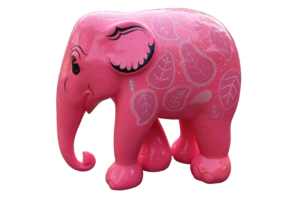 So… What were you thinking about? Chances are good that the damn pink elephant floated through your mind. Am I right? And because the instructions were to not think about that pink elephant, you may have found yourself getting frustrated that you weren’t doing it right. The same thing happens in real life. We can’t just tell our mind to stop thinking about something. Instead, we need to direct it to what we want it to focus on. And this is where our senses come in. Our senses give us nonstop information about what is going on in the present moment. And when our present moment involves children, our senses are giving us tons of information about them (ahem, sometimes a little too much). So if we choose to practice mindfulness during our interactions with them, we have a lot of material to work with.
So… What were you thinking about? Chances are good that the damn pink elephant floated through your mind. Am I right? And because the instructions were to not think about that pink elephant, you may have found yourself getting frustrated that you weren’t doing it right. The same thing happens in real life. We can’t just tell our mind to stop thinking about something. Instead, we need to direct it to what we want it to focus on. And this is where our senses come in. Our senses give us nonstop information about what is going on in the present moment. And when our present moment involves children, our senses are giving us tons of information about them (ahem, sometimes a little too much). So if we choose to practice mindfulness during our interactions with them, we have a lot of material to work with.
Mindfulness and Children
Spending time with our kids is something we are already trying to do anyway, because we all know how much our children crave our attention. And choosing to spend time with them in a mindful way will not only benefit you, but it will equally benefit them! Because they will feel your presence, and it will make them feel important and loved. How’s that for win-win? The other awesome thing about this technique is that it doesn’t matter how old your children are. You can be a mindful mama of a newborn baby or a mindful dad of an 18-year-old. There’s no need to wait, and it’s never too late to start.
How to Start a Mindfulness Practice
So, now that we’ve covered all the WHYS, let’s turn to the HOWS.
Practice Mindfulness While Parenting
There are lots and lots of different ways to be mindful. You can essentially choose to be mindful while doing anything– from washing dishes, to showering, to going on a walk. But a great way to reap the benefits for both you and your child is to practice mindfulness while engaging with your child. Maybe it’s on the floor playing together. Maybe it’s while enjoying dinner together. Or maybe it’s during a bedtime cuddle session. It really doesn’t matter what you’re doing, just pick a place to start.
Choose the Right Moment
The most important piece to your mindful practice is choosing a time when you can commit to being fully present in the moment. So, it’s probably not a good time when you’ve got to be out the door in 10 minutes and haven’t finished getting ready. Or when you’ve got a million things you’re trying to accomplish at once before dinnertime. Instead, pick a time when you’re able to dedicate a few minutes exclusively to being with your child.
Set a Time Limit
Being mindful is a very mentally effortful activity. So it’s not realistic to suggest that you’re going to suddenly be able to be mindful all day long. Because there’s a lot of other mental activities we have to do– especially as parents (multitasking kings and queens over here, right?!). Instead, I would suggest starting out by setting a modest time frame for yourself. Perhaps 5 minutes. This helps set you up for success, increases the likelihood that it will feel realistic to incorporate into your life, and hopefully limits the stress that you feel about trying to learn a new technique.
Let Go of Irrelevant Thoughts
The key is to focus your attention on any information coming at you in the present moment via your senses. That means that any thought, image, or memory that comes into your head that is not relevant to the present moment should be let go. Hear me when I tell you that you WILL have irrelevant thoughts come into your head. This is by no means an indication that you’ve failed. Instead, it is just another reminder that parenthood has not zapped your humanness after all. Being able to gracefully let go of irrelevant thoughts is an integral part of mindfulness. Because trying to fight a battle in your head sure doesn’t get you any closer to your goal of being present in the moment. Below are a few examples of unhelpful thoughts that you might find yourself thinking:
- Dammit. I’m doing it wrong.
- What’s the point of trying.
- What is wrong with me?
- Oh my god, there I go again.
- UGH! I’m never going to be able to do this!
If you find yourself thinking things that resemble any of these, it’s best to pause, take a deep breath, and reorient yourself. Instead of beating yourself up every time you lose focus, just notice that you got off track. Here are some things you can say to yourself instead:
- Oops. Let me re-focus.
- I don’t need to think about that right now.
- All I need to focus on is what is happening right in front of me.
- Let it go.
There are lots of ways to be kind to yourself while still trying to get back on track. So just try putting it into your own words and see what works for you. And remember that pink elephant. Instead of focusing your attention on what you shouldn’t be doing, turn your attention to what you do want to pay attention to.
Follow Your Senses
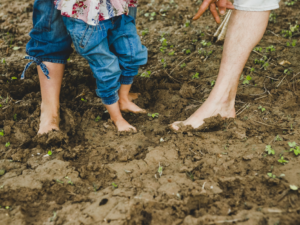 Once you’re ready to get started, it’s time to guide yourself to each of your senses. If you’re new to this practice, the first time you sit down and try to pay attention to your senses, you might not notice anything. The reality is we are getting sensory information 24 hours a day and we have learned to tune a lot of it out. To help get you started on noticing this information, I’ve put together a list of ideas for each sense that can help direct your attention. This is just a starting point, and you can always adapt as you get comfortable.
Once you’re ready to get started, it’s time to guide yourself to each of your senses. If you’re new to this practice, the first time you sit down and try to pay attention to your senses, you might not notice anything. The reality is we are getting sensory information 24 hours a day and we have learned to tune a lot of it out. To help get you started on noticing this information, I’ve put together a list of ideas for each sense that can help direct your attention. This is just a starting point, and you can always adapt as you get comfortable.
What are you hearing?
- Listen to your child’s voice
- Listen to the sounds of your child’s body (Is he clapping? Jumping? Breathing loudly? Hiccuping? Tapping? Laughing? Crying?)
- Listen to the sounds of any toys or activities your child is doing (Is there a ball bouncing? A toy playing music? A keyboard clicking? Book pages turning?)
- Listen to the sounds of the environment (Are there any birds chirping? Any wind blowing? Any vehicles driving?)
- Listen to the sounds of your home (Is the refrigerator humming? Is the dishwasher running? Is there music playing?)
What are you seeing?
- Look at your child’s facial expression (Is she smiling? Crying? Confused? Bored?)
- Look at your child’s body language (Is she energetic? Is she sluggish? Is she engaged? Is she affectionate? Is she tense?
- Look at the toys or activities around you (Are they lighting up? Are they colorful? Are they worn from overuse?)
- Look at your environment (Is it bright or dark? Is it clean or dirty?)
What are you touching?
- Notice how your child feels (Is his skin soft or rough? Is his hair silky or frizzy? Is he warm or cool? Is he heavy or light?)
- Notice how where you’re sitting or standing feels (Is it hard? Is it rough? Is it cold? Is it soft?)
- Notice how your clothes feel (Are they loose? Are they scratchy? Are they stiff?)
- Notice what you feel with your hands
What are you smelling?
- Notice how your child smells (Does she smell of milk? Can you notice the scent of her bath wash? Can you smell sweat?)
- Notice how you smell
- How does the environment smell (Is anything cooking? Is there any scented candles lit?
What are you tasting?
- Can you taste something that you’re currently eating or drinking?
- Can you taste a hint from your last meal?
- Can you taste your toothpaste?
Embrace Imperfection
Let me just say it bluntly: you’re going to have lots of “failures.” I put that word in quotes because while it’s common to experience imperfection as failure, the reality is it’s just part of the experience. Instead of focusing on all the times your mind wandered, try and focus on the information you gathered about your child. And any moments of joy, peace, curiosity, etc. These insights and emotions are part of the gifts of mindfulness. So enjoy them. Inevitably, when you are offering your child 100% of your attention, they are going to EAT IT UP! They will feel the qualitative difference when your mind is in the same place as your body, and you will likely see some differences in their reactions to you (in the same way that we become more engaged in conversation with someone who is demonstrating interest through specific questions, engaged non-verbals, and relevant responses vs. someone offering the obligatory “mm-hmms” and head nods here and there). But you will also feel the difference! You will feel less stressed by being able to devote all of your brain power to one thing instead of splitting it in multiple directions. And by learning to be an observer of yourself in reaction to your child, you will find a path to more patience, thoughtfulness, and an overall sense of calm. Tell me who doesn’t want that?! When you find the right time to try this, drop a line and let me know how it went!
____
Dana Basu, PsyD is a licensed clinical psychologist and founder of EverGROW therapy. She provides individual therapy, support groups, and online resources for parents in Orange County and throughout the state of California via online therapy. She specializes in working with people with difficult childhood experiences, trauma, parenting stress, chronic guilt, and the highly sensitive person.
